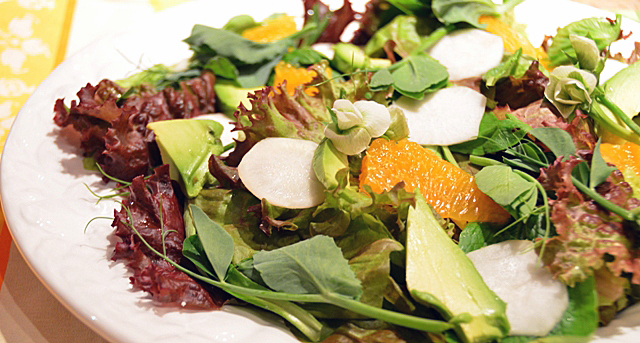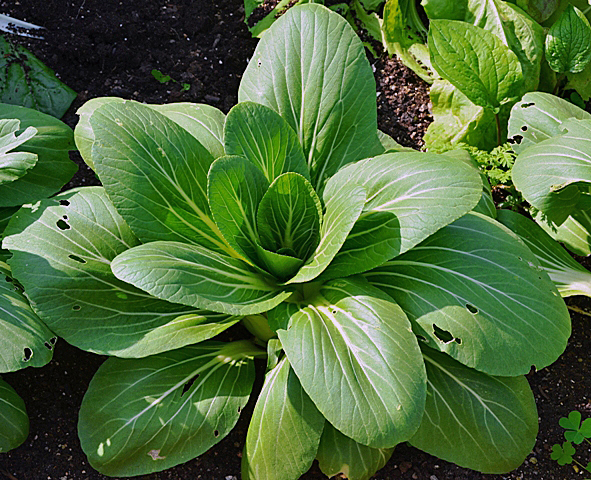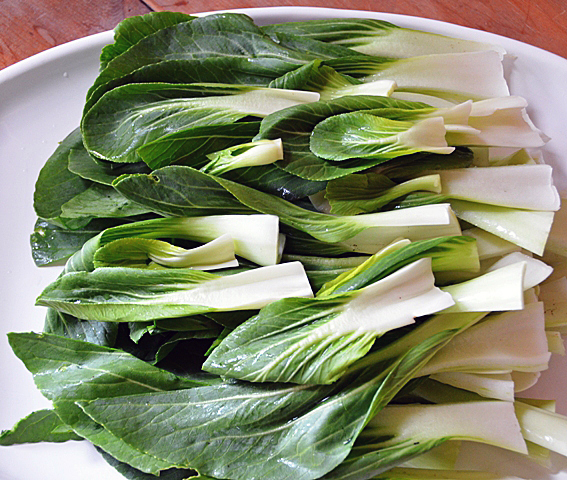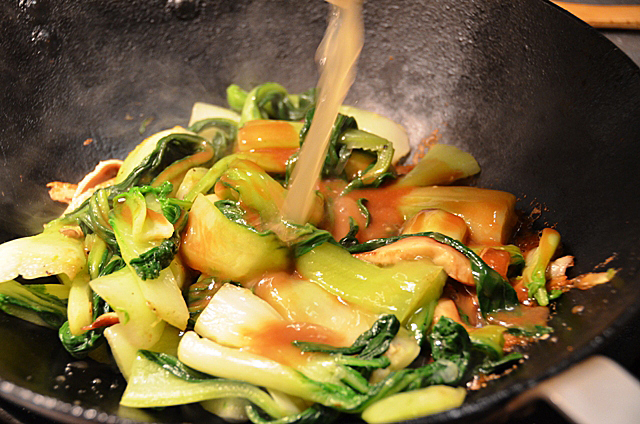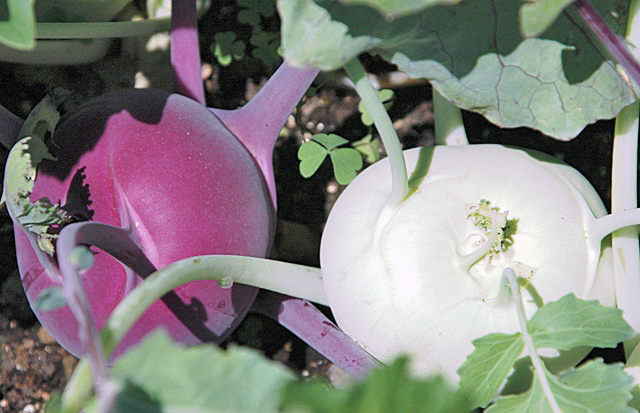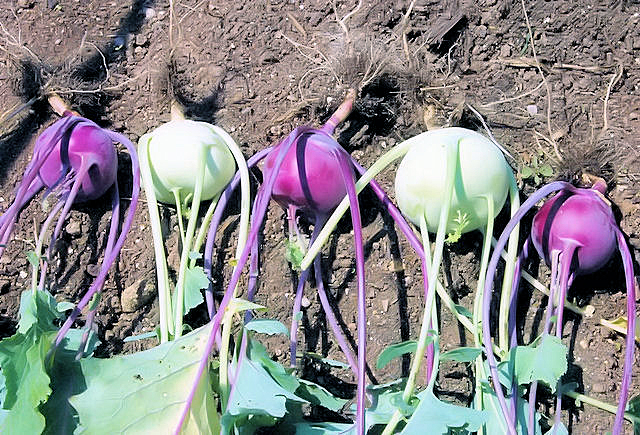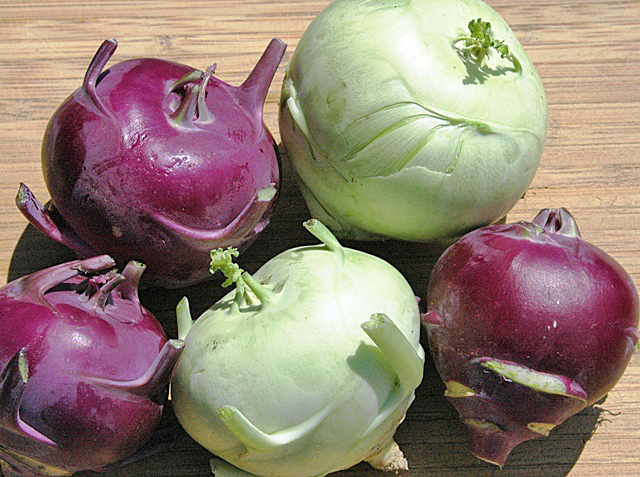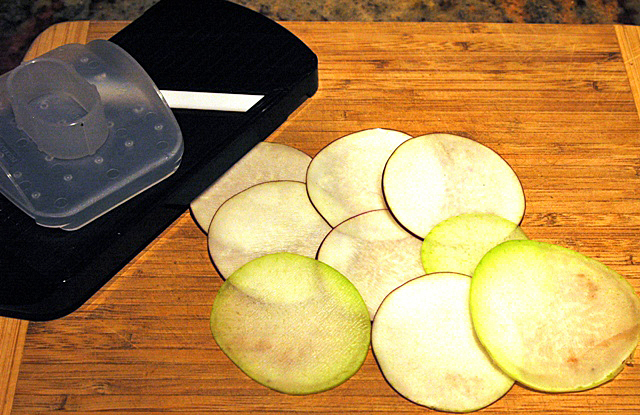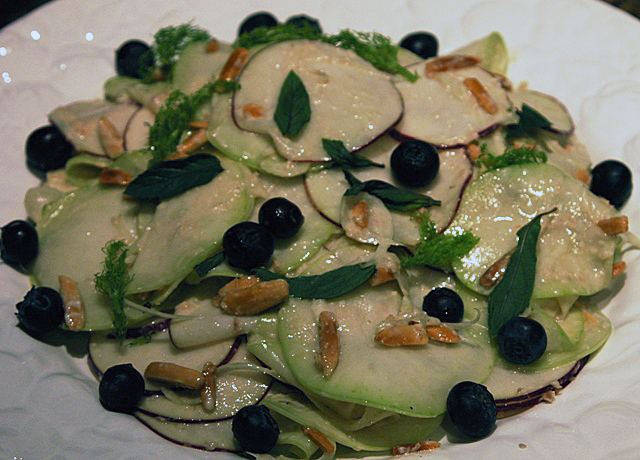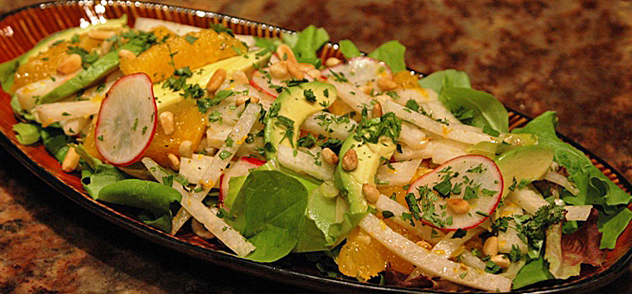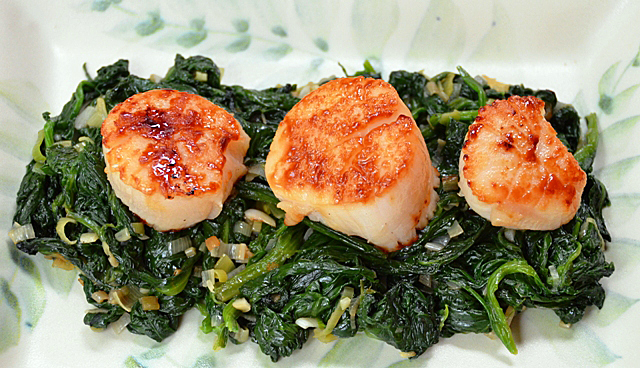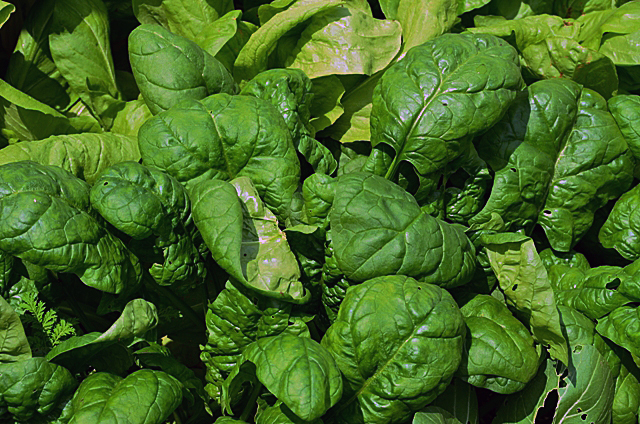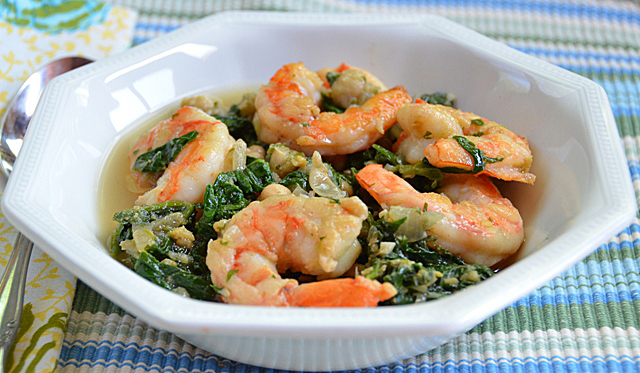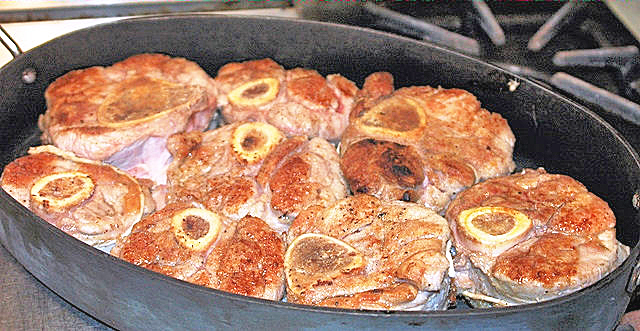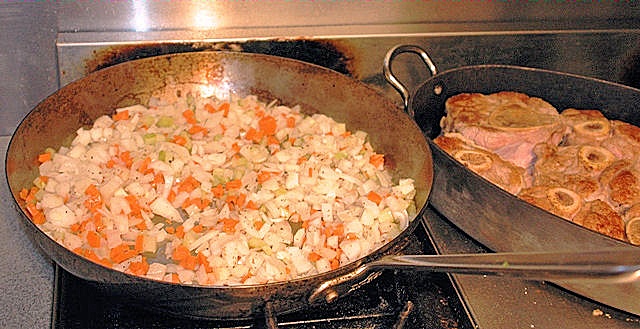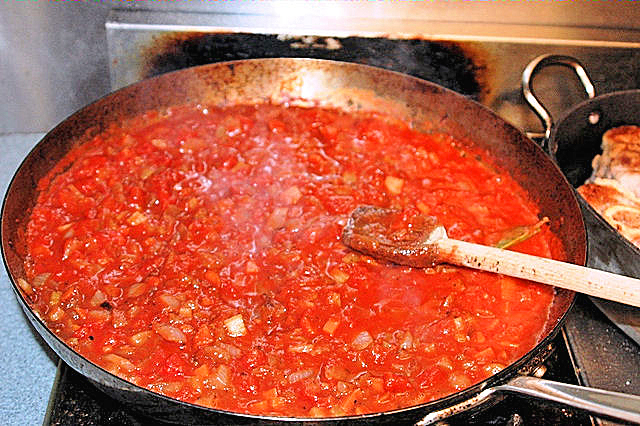The spring salads we enjoy are a combination of our garden’s bounty, fresh produce from the Wrightstown farmer’s market and new tastes that have caught my eye, or in this case, my ear. This salad is no exception. The Lolla Rossa lettuce, snow pea shoots and Easter egg radishes were from the garden. The mini Hakurei turnips were from the farmer’s market and I had a ripe avocado in the fridge. The sweet Japanese turnips reminded me of something else sweet that originated in Japan that I had in the refrigerator, a Sumo citrus.
I first heard about the Sumo on two of the food podcasts I listen to, Good Food hosted by Evan Kleiman from KCRW Los Angeles and The Splendid Table hosted by Lynne Rosetto Kasper. Self proclaimed “fruit detective” and food writer for the Los Angeles Times, David Karp wove a tale of intrigue behind the fruit that took over 30 years to develop. The Dekopon, as it was originally known in Japan, is a cross between a satsuma mandarin and California navel orange. It has been sold in the United States since 2011 under the name Sumo citrus because the topknot on the orange resembles the hairstyle worn by sumo wrestlers. Karp told his listeners that “of the 1000 varieties of citrus he had tasted, the Dekopon is the most delicious” and “the pulp has the perfect balance of sweetness and acidity”. I wanted to try one but learned that most of the small distribution would be on the west coast with some in larger markets on the east. I was pleasantly surprised to find Sumos in my local Wegmans. Two of the plump Sumos were five dollars, a bit pricy, but the accolades piqued my curiosity. I must agree that the easy to peel Sumo was the tastiest citrus I ever tasted. I decided to add one to my salad this evening. The combination of the frilly magenta-leaved Lolla Rossa lettuce, sweet mini Hakurei turnips, delicate flowering pea shoots, creamy avocado slices and wonderful bursts of sweet citrus courtesy of the Sumo made a wonderful salad.
Spring Salad for two
Ingredients
- 1/4 c pomegranate tangerine vinegar
- 1t Dijon mustard
- 1t minced shallot
- 3/4 c extra virgin olive oil
- splash of orange olive oil
- Kosher salt and freshly ground pepper
- Two small heads of Lolla Rossa lettuce
- 4 Hakurei turnips, peeled and thinly sliced on a mandoline
- 1 Sumo Citrus supremed
- 1 firm-ripe avocado, pitted, peeled and thinly sliced
- A handful of snow pea shoots and tendrils
Directions
- Combine the first five ingredients in a small bowl, whisk to combine, add salt and pepper to taste
- Separate lettuce into leaves, wash and spin in salad spinner
- Place lettuce on serving platter, top with turnip slices, Sumo, avocado and pea shoots.
- Toss with enough dressing to lightly coat, there will be some left. Top with fresh ground pepper to taste
